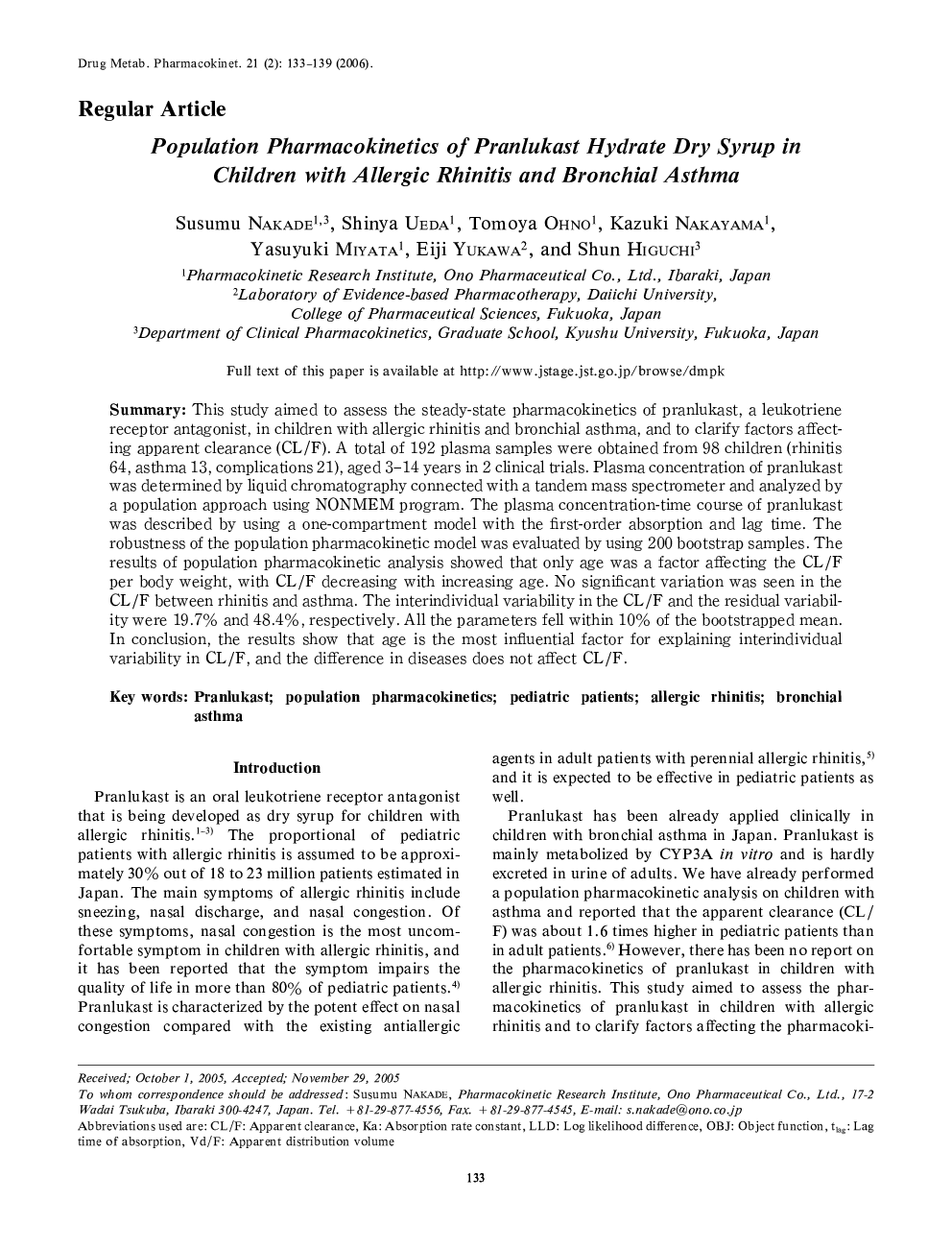| Article ID | Journal | Published Year | Pages | File Type |
|---|---|---|---|---|
| 2479581 | Drug Metabolism and Pharmacokinetics | 2006 | 7 Pages |
Summary:This study aimed to assess the steady-state pharmacokinetics of pranlukast, a leukotriene receptor antagonist, in children with allergic rhinitis and bronchial asthma, and to clarify factors affecting apparent clearance (CLWF). A total of 192 plasma samples were obtained from 98 children (rhinitis 64, asthma 13, complications 21), aged 3–14 years in 2 clinical trials. Plasma concentration of pranlukast was determined by liquid chromatography connected with a tandem mass spectrometer and analyzed by a population approach using NONMEM program. The plasma concentration-time course of pranlukast was described by using a one-compartment model with the first-order absorption and lag time. The robustness of the population pharmacokinetic model was evaluated by using 200 bootstrap samples. The results of population pharmacokinetic analysis showed that only age was a factor affecting the CLWF per body weight, with CLWF decreasing with increasing age. No significant variation was seen in the CL WF between rhinitis and asthma. The interindividual variability in the CLWF and the residual variability were 19.7% and 48.4%, respectively. All the parameters fell within 10% of the bootstrapped mean. In conclusion, the results show that age is the most influential factor for explaining interindividual variability in CLWF, and the difference in diseases does not affect CLWF.
